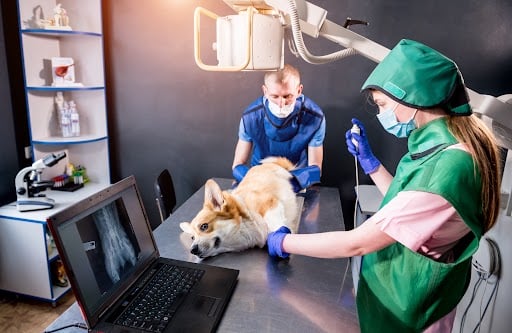Veterinary clinics have unique goals and challenges that set them apart from human hospitals. While both strive to deliver excellent care, vets must consider the specialized needs of diverse animal species when investing in veterinary radiology equipment. Choosing the right imaging equipment requires aligning with the clinic’s specific objectives, such as optimizing efficiency and prioritizing animal comfort.
In this article, the experts at Imperial Imaging Technology outline key considerations to keep in mind when purchasing veterinary radiology equipment, ensuring you make informed choices that align with your clinic’s vision.
Image Quality
Do not compromise on image quality when purchasing veterinary radiology equipment. Clear images directly impact diagnostic accuracy, allowing veterinarians to identify conditions like fractures and tumors. As a result, animals can be treated promptly, often leading to better overall outcomes. Additionally, capturing high-quality images on the first try reduces the need for retakes, saving time, minimizing radiation exposure, and speeding up the entire process.
Ease of Use
Ease of use is an essential consideration when purchasing veterinary radiology equipment. This is because the usability of your veterinary imaging equipment directly affects the clinic’s workflow. If the equipment is user-friendly, staff can quickly adapt to it, minimizing downtime and ensuring animals spend as little time with the equipment as possible.
Additionally, consider whether the purchase includes installation and training –– these factors can significantly impact how smoothly your team transitions to new equipment. Comprehensive training ensures that all staff members are confident in operating the medical imaging system, which reduces errors and improves the accuracy of diagnoses. Ultimately, choosing equipment that is easy to use, along with proper support during installation, helps veterinary clinics maintain productivity while delivering high-quality care to animals.
Durability and Reliability
When animals are involved, imaging equipment receives frequent, potentially harsh use – so your machines should be durable enough to keep working through it all. Reliable machines maintain their accuracy over time, which is vital for effective diagnosis and treatment. Additionally, investing in durable veterinary imaging equipment decreases the need for frequent replacements, saving your clinic money in the long run.
Warranty and Service Plans
Even the most durable machines break down over time, so your practice benefits from warranty and service plans. Preventative maintenance and upkeep are essential to ensure you get the most out of your investment. Furthermore, a fair warranty ensures that any defects or malfunctions in a machine are covered, reducing unexpected repair costs and downtime. Be sure to ask medical imaging equipment companies about the plans they offer so that you can protect the longevity of your machines.
Versatility
Don’t spend money on a veterinary imaging machine that is a one-trick pony. When shopping around, look for versatile equipment that is compatible with your existing systems and can easily be used with a range of species. Your clinic team will thank you for investing in equipment that can fit seamlessly into well-known protocols and facilitate nuanced diagnosing.
Compatibility
Check that the equipment you’re considering is compatible with your current software so that integration will be as smooth as possible. Engaging with your IT and compliance teams early in the process can help identify potential issues and confirm that the new equipment adheres to all regulatory standards.
Portability
Finding portable equipment can be beneficial to veterinarians who routinely treat large animals at homes or farms. Portable imaging equipment can also improve efficiency within the clinic setting by allowing for quick diagnostics in the examination room. By eliminating the need to move an animal to a separate room for imaging, you can reduce stress for both pets and their caregivers while possibly reducing the need for anesthetics during the process.
Cost Considerations
Finally, consider what your clinic can afford. Request quotes on machine prices, maintenance costs, and warranty details from multiple vendors. This information enables you to calculate the monthly expenses associated with new equipment. Additionally, base your purchasing decisions on modest, realistic revenue projections – which prevents making a risky purchase.
Financing Options
You can also look into financing options when purchasing new equipment. Leasing allows for lower initial costs and the flexibility to upgrade, while traditional loans and manufacturer financing provide capital for outright purchases. Payment plans enable clinics to pay in installments, which helps ease cash flow concerns.
Be sure to also look into grants and funding programs, which offer financial support to practices in underserved areas. Trade-in programs may also help offset costs by providing credit for older equipment. Work with your team to explore all these options, so you can invest in the imaging tools that your clinic needs.
Enhance Your Veterinary Clinic with Imperial Imaging Solutions
Whether you operate a rural animal hospital, a large referral practice, or an institution, Imperial Imaging delivers quality radiology and X-ray solutions for veterinary clinics at an affordable price. Choose from fully integrated systems or digital upgrades to retrofit existing equipment, dental radiography, or in-house MRI and CT systems. Contact Imperial Imaging today for cost-effective, low-radiation medical imaging equipment solutions that support your workflow.

